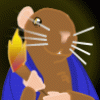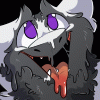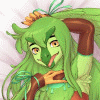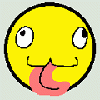
I've received a good number of questions about how to get a certain part of a yinglet's anatomy right, so it's probably past time I throw together a little demonstration about which parts go where.
Category Artwork (Digital) / Tutorials
Species Unspecified / Any
Size 900 x 1596px
File Size 292.1 kB
Meaning no offense, Val, because you're very talented with this stuff and I wish only to clear up a common misconception:
What you're calling the "foreleg" is in fact the foot (IF you're using standard vertebrate bone structure/count). "Foreleg" actually refers to an animal's front legs. If you meant it in the context similar to "forearm", then on your 1-2-3 bit there, the foreleg would be section number 2.
Check this out: https://upload.wikimedia.org/wikipe.....keleton_EN.gif
If (and again only if) you're using conventional vertebrate bones, then the bit at the intersection of 2 and 3 is the "heel", located at the top of the hind legs for a yinglet, but at the bottom of the forearm on the front end. So the long bits in front and rear are extensions of two different sets of bones. :D
What you're calling the "foreleg" is in fact the foot (IF you're using standard vertebrate bone structure/count). "Foreleg" actually refers to an animal's front legs. If you meant it in the context similar to "forearm", then on your 1-2-3 bit there, the foreleg would be section number 2.
Check this out: https://upload.wikimedia.org/wikipe.....keleton_EN.gif
If (and again only if) you're using conventional vertebrate bones, then the bit at the intersection of 2 and 3 is the "heel", located at the top of the hind legs for a yinglet, but at the bottom of the forearm on the front end. So the long bits in front and rear are extensions of two different sets of bones. :D
No offense taken! What you're describing is actually the way some of the early concepts went, but these little things actually have full "hands" at the ends of both their upper and lower sets of stilt-legs/arms, which are roughly identical in formation. Good for grabbing stuff off the ground, or the bottom of a stream!
Aye, thought it's not as versatile as a human's. Still, if you put your hand on a flat surface with your forearm standing upright (like this: http://i.imgur.com/uU3uCXD.jpg ), that's a pretty close approximation to how their feet/legs are put together.
This is WAY late as a reply. Eight years late in fact. And it bothered me and a friend...
Not that we realized this new legbone and joint existed, but that we didn't have NAMES for them. Thus, if it is not already something you addressed.
I suggest, for that VERY long extra bone after what WOULD be the thigh and shin, be labeled as 'Zhe Spindle', cause, it's long and spindly, naturally.
But the joint? Well, Zhat is 'Zhe Springy'! As it is sort of in charge of a LOT of movement just on account of it controlling the largest bone. It also would be what allows a ying to fling itself the best just on account of it having the largest lever attached to it.
Not that we realized this new legbone and joint existed, but that we didn't have NAMES for them. Thus, if it is not already something you addressed.
I suggest, for that VERY long extra bone after what WOULD be the thigh and shin, be labeled as 'Zhe Spindle', cause, it's long and spindly, naturally.
But the joint? Well, Zhat is 'Zhe Springy'! As it is sort of in charge of a LOT of movement just on account of it controlling the largest bone. It also would be what allows a ying to fling itself the best just on account of it having the largest lever attached to it.
Or perhaps like http://www.furaffinity.net/view/14635633/" rel="nofollow ugc noreferrer noopener">this
Ow, i thought they had a sternum like a birb. which is covered by fluff mostly.
http://www.furaffinity.net/view/16003974/
http://www.furaffinity.net/view/16003974/

 FA+
FA+



























Comments